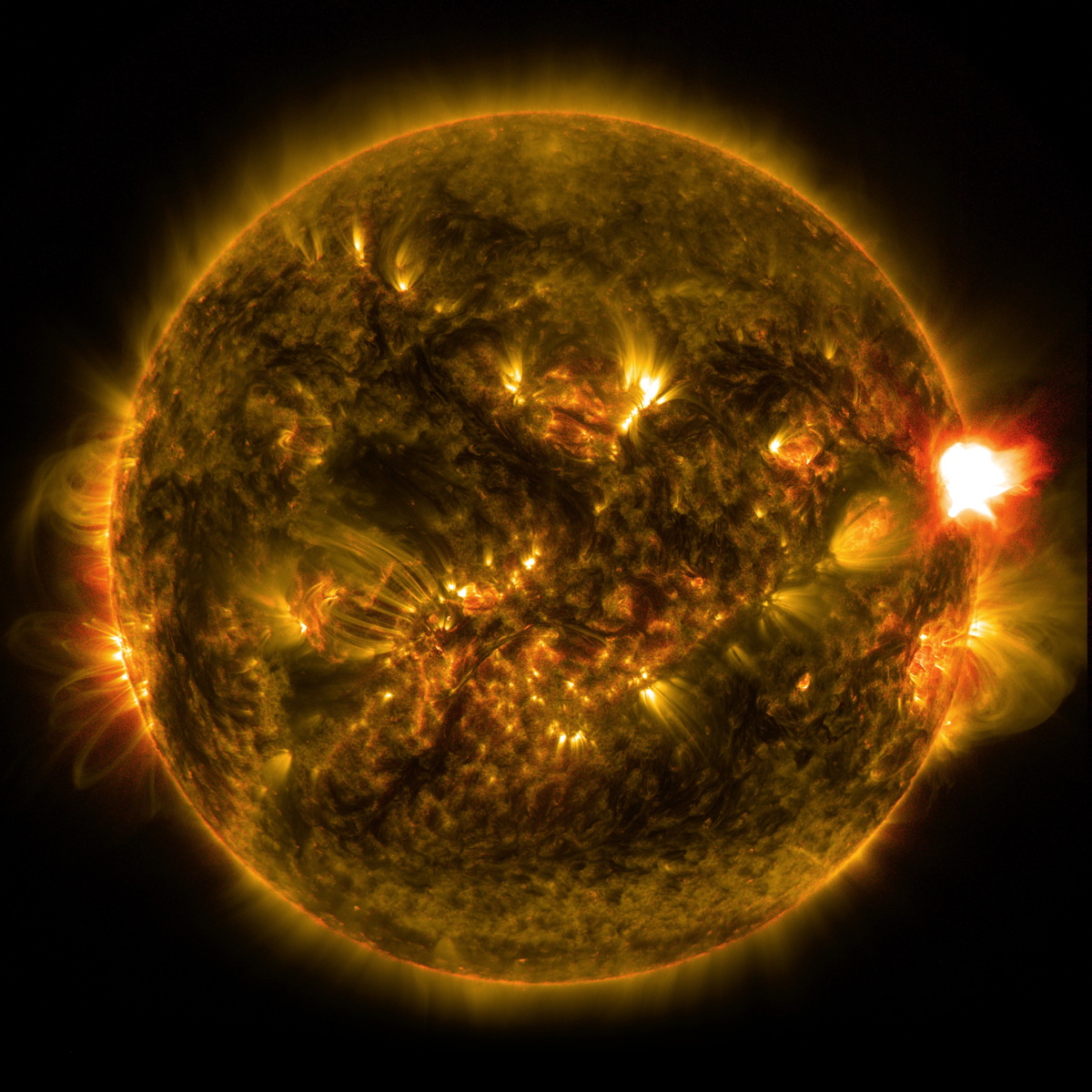Sun Fires Off First Strong Solar Flare of 2015 (Video)
The sun unleashed its first significant solar flare of 2015 on Monday night, triggering a short-lived radio blackout for some parts the Earth, space weather experts say.
The mid-sized flare solar flare peaked at 11:24 p.m. EST (0424 GMT) on Jan. 12 and prompted a temporary radio blackout for some regions of the sunlit parts of Earth during that lasted tens of minutes, according to an update from the U.S. Space Weather Prediction Group. NASA's sun-watching Solar Dynamics Observatory (SDO) captured video of the solar flare in multiple wavelengths of light.
In an image captured by SDO, the bright pop of light can be seen on the upper right side of the sun. Also seen in the image are what appear to be loops of light that rise up out of the sun's surface. These loops are created by the tumultuous magnetic field lines in the sun. The arcing loops connect the negative and positive ends of an active magnetic region.
Solar flares are our solar system's largest explosive events, according to NASA. The Jan. 12 solar flare has been classified as an M5.6-class sun storm.
"M-class flares are a tenth the size of the most intense flares, the X-class flares," according to a statement from NASA. "The number provides more information about its strength. An M2 is twice as intense as an M1, an M3 is three times as intense, etc."
Solar flares eject large amounts of photons that can potentially do harm to satellites orbiting the Earth. But the biggest solar threat to human-made technology are coronal mass ejections (CMEs), which can hurl billions of tons of solar matter away from the sun, traveling at several million miles per hour. These powerful particles can damage satellites and spacecraft, and can even do damage to power grids on Earth. Solar flares and CME's are sometimes associated, but can also occur independently.
NASA's SDO satellites are monitoring the sun around the clock, and keep an eye out for threatening solar events. The Jan. 12 solar flare does not appear to be associated with a CME.
Breaking space news, the latest updates on rocket launches, skywatching events and more!
Follow Calla Cofield @callacofield. Follow us @Spacedotcom, Facebook and Google+. Original article on Space.com.

Calla Cofield joined Space.com's crew in October 2014. She enjoys writing about black holes, exploding stars, ripples in space-time, science in comic books, and all the mysteries of the cosmos. Prior to joining Space.com Calla worked as a freelance writer, with her work appearing in APS News, Symmetry magazine, Scientific American, Nature News, Physics World, and others. From 2010 to 2014 she was a producer for The Physics Central Podcast. Previously, Calla worked at the American Museum of Natural History in New York City (hands down the best office building ever) and SLAC National Accelerator Laboratory in California. Calla studied physics at the University of Massachusetts, Amherst and is originally from Sandy, Utah. In 2018, Calla left Space.com to join NASA's Jet Propulsion Laboratory media team where she oversees astronomy, physics, exoplanets and the Cold Atom Lab mission. She has been underground at three of the largest particle accelerators in the world and would really like to know what the heck dark matter is. Contact Calla via: E-Mail – Twitter


